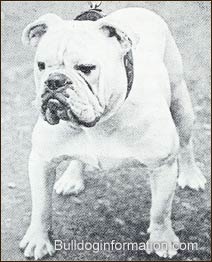The word Bandog was also used ambiguously and applied not to a distinct breed, but to all dogs that were usually kept chained up or in bonds. To make things even more complicated, ancient texts written by Roman historians described the fierce Greek, Molossian dogs and the "pugnace britannicii" or
fighting dogs of Britain used in battles. These
fighting dogs of Britain were known as the "broad-mouthed dogs of Britain", and according to R.H. Voss "there is very little doubt that they were the original and remote ancestors of our Mastiff and Bulldog. They appealed immensely to the Romans, who sent considerable numbers of them from Britain to Rome to take part in the sports of the amphitheater, and it has even been said that the Romans appointed an officer to select British dogs and export them to Rome."


































